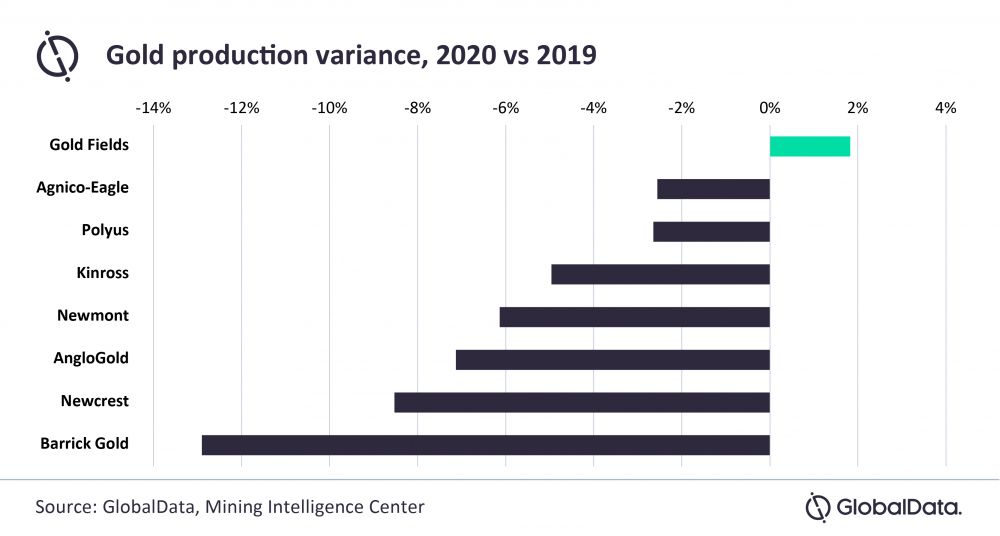
Gold production from the eight largest miners is expected to increase by up to 3.1% in 2021.
This comes after the industry’s top gold producers – Newmont, Barrick, AngloGold, Polyus, Kinross, Gold Fields, Newcrest and Agnico-Eagle – felt the effects of a 6.5% reduction in output to 24.98 million ounces in 2020, following lower ore grades, sale of assets, lower mill throughput and lower recoveries.
But data and analytics firm GlobalData projects production from those companies to recover and reach somewhere between 25-25.75 million ounces in 2021.
The most significant falls in production last year were observed amongst the top three companies – Newmont (6.1%), Barrick (12.9%) and AngloGold (7.1%). The collective output from those miners declined to 13.7 million ounces in 2020 from 15 million ounces in 2019.
Vinneth Bajaj, associate project manager at GlobalData, said: “After a strong first quarter in 2020, Newmont’s production was impacted by lower ore grades at the Ahafo, Yanacocha and Merian mines and the temporary suspension of the Cerro Negro, Yanacocha, Eleonore, Penasquito and Musselwhite mines between March and mid-May. In addition, the sale of Red Lake and Kalgoorlie projects further reduced output.”
Lockdowns imposed by governments impacted gold production last year
For Barrick, several gold mines were forced to cease operations temporarily due to the government lockdowns imposed to stem the spread of coronavirus infections, including the Veladero, Pueblo Viejo and Porgera sites.
Meanwhile, the divestment of African assets by AngloGold was a major factor behind the fall in the company’s output in 2020.
In February last year, the miner agreed to sell the Mponeng mine in the Gauteng province to rival company Harmony Gold.
The world’s deepest gold mine was AngloGold’s last in South Africa and, following the announcement, the company admitted it had been looking to reduce its portfolio in a bid to shift its focus towards assets with higher returns.

Elsewhere, lower ore grades, sale of assets, lower mill throughput and lower recoveries were key factors affecting production across the remaining major gold producers, according to Bajaj.
“For example, lower ore grades at Paracatu, Round Mountain and Chirano mines were behind the drop in production from Kinross, although it was partially offset by higher output from the company’s Bald Mountain and Kupol operations,” he added.
Newcrest’s production was severely affected by the sale of Gosowong mine, which was acquired by Indotan Halmahera in the second quarter of 2020.
Lower throughput rates and lower grades at the Cadia, Lihir, Red Chris, and Telfer mines, following a series of planned shutdowns, also subsequently impacted the company’s production.






